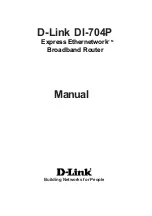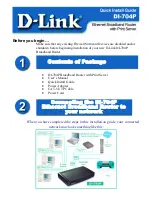
15
FEEDING THE ROUTER
The “secret” of professional routing and edge shaping
lies in making a careful set-up for the cut and in selecting
the proper rate of feed.
DIRECTION (EXTERNAL)
See Figures 14 and 15.
When routing, the cutter rotates clockwise. Therefore,
you should feed the router into the workpiece from left to
right. When you feed the router from left to right, the
rotation of the cutter pulls the router against the
workpiece. If you feed the router in the opposite direction,
the rotational forces of the spinning bit tend to throw the
router away from the workpiece. This action could cause
you to lose control of the router.
The router motor and bit revolve in a clockwise direction.
This gives the tool a slight tendency to twist in a
counterclockwise direction, especially when the motor
revs up.
Because of the extremely high speed of bit rotation
during a proper feeding operation, there is very little
kickback to contend with under normal conditions.
However, if the bit strikes a knot, hard grain, foreign
object, etc. that affects the normal progress of the cutting
action, there will be a slight kickback. This kickback is
sufficient to spoil the trueness of your cut if you are not
prepared. Such a kickback is always in the direction
opposite to the direction of bit rotation.
To guard against such a kickback, plan your setup and
direction of feed so that you will always be thrusting the
tool—to hold it against whatever you are using to guide
the cut—in the same direction that the leading edge of
the bit is moving. In short, the thrust should be in a
direction that keeps the sharp edges of the bit
continuously biting straight into new (uncut) wood.
DIRECTION (INTERNAL)
See Figure 16.
Whenever you are routing a groove, your travel should be
in a direction that places whatever guide you are using at
the right-hand side. That is, when the guide is positioned
as shown in the first part of the figure, tool travel should
be from left to right and counterclockwise around curves.
When the guide is positioned as shown in the second
part of the figure, tool travel should be right to left and
clockwise around curves. If there is a choice, the first
setup is generally the easiest to use. In either case, the
sideways thrust you use is against the guide.
Fig. 16
6
5
1
8
1/4 in. to 1 in.
(6.35 mm to 25.4 mm)
7
4
3
Fig. 14
2
PROPER CUTTING SEQUENCE
OPERATION
GUIDE OUTSIDE
GUIDE
FEED
THRUST
BIT ROTATION
GUIDE
FEED
GUIDE INSIDE
BIT ROTATION
ROUTER FEED DIRECTION
ROUTER FEED DIRECTION
ROUT END GRAINS
DIRECTION
Fig. 15
Summary of Contents for R181D
Page 23: ...23 NOTES...










































